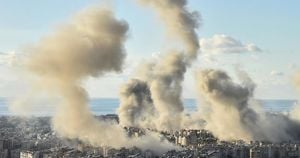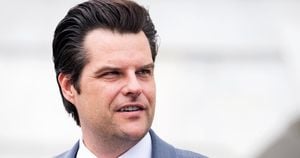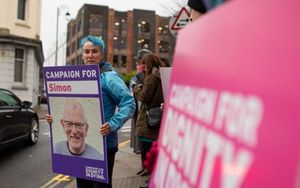Philadelphia has been rocked by alarming violence recently, as authorities now find themselves addressing a string of vicious assaults carried out by teenagers. Last week, six juveniles, aged between 13 and 15, were charged after their series of random attacks sent shockwaves through the Center City area. The incidents on November 19 were particularly brutal, raising concerns about youth violence and the underlying factors prompting such behavior.
The spate of violence initiated just after 3 PM on the day of the assaults. The first victim was punched by one of the attackers, identified as homeless, at 15th and Chestnut streets. This initial incident was unfortunately just the tip of the iceberg. Within minutes, the group moved on, targeting a 24-year-old woman who found herself knocked to the ground and attacked even as she struggled to get back to her feet. She would later require hospitalization due to the concussion she sustained during the attack.
Police reported additional attacks soon after, including the brutalization of both men and women, showcasing the indiscriminate nature of the violence. Just five minutes following the assault on the woman, a 31-year-old man was chased and punched near Logan Circle, and later, by 4:10 PM, another woman outside Target was attacked. Despite none of the assaults being provoked or framed as acts of robbery, the assaults seemed erratic and poorly thought out.
Inspector Raymond Evers of the Philadelphia Police shared insights during press conferences, noting the collective act of aggression by the teenagers as they seemingly joined forces to inflict harm. The sheer amount of brutality exhibited during these attacks prompted local media outlets to question not only the motivations behind the violence but also the influencers surrounding these youth.
On November 22, surveillance footage of the incidents was released, which authorities used to identify the alleged culprits. It was reported by several news outlets, including NBC Philadelphia and Metro Philadelphia, which traced their path through Center City—a day filled with the unremitting nature of youth violence spiraling out of control. Shortly after the release of images and video footage, the parents of the teenagers took the initiative to turn them over to the police voluntarily, underscoring the gravity of the situation.
Parents of the involved minors explained to reporters how they recognized their children’s roles. "The parents were right on point; they saw their kids did something wrong on Wednesday, and on Friday, they turned their kids in," Inspector Evers stated. This swift action by parents offers hope for some accountability but also raises questions: What drove these children to commit such acts? What systems are failing within the community to allow such transitions toward violence?
Crucially, all six teenagers are students at Anthony Wayne Academy, located in Germantown—a point raised during discussions about school accountability and community involvement. Interestingly, none of the participating minors had any prior criminal records, raising eyebrows over what prompted their seemingly coordinated assaults. The seventh youth, though present during the events, has been identified but was not involved directly; she may have witnessed the attacks and could shed light on what transpired within the group.
Beyond the immediate aftermath of these assaults, law enforcement and community leaders are left to mull over the circumstances creating such violent episodes. Experts have often linked youth violence to various social factors, including familial dynamics, school environments, and the pervasive influences of societal norms surrounding aggression. The incident has sparked considerable community discussions about the role families, schools, and social networks play when it involves shaping youth behavior.
Overall, several community members have expressed urgency to bridge the gap between youth and constructive activities to prevent future incidents. The call for action resonates across Philadelphia streets, aiming to divert young adolescents from cycles of violence. Opportunities for community engagement, mentoring programs, and constructive outlets could greatly aid any larger societal issues at hand.
The incidents culminated with the teenagers now facing charges including aggravated assault, conspiracy, and reckless endangerment through the juvenile justice system. Their cases were processed quickly due to the serious nature of the crimes committed. Further investigations are underway, inviting dialogue from the community about how to process and address youth violence.
With the reality of street violence creeping back steadily—and often being tied to younger generations—local law enforcement, community leaders, and educators strive to adopt more proactive measures to safeguard the Philadelphia community. Developing clearer insights on both prevention and intervention could help save vulnerable youth, providing paths toward positive growth rather than destructive behavior.
This series of attacks, spoken about fervently across all media platforms, remains marked by overarching questions about youth behavior and the contributing factors to violent actions. Taking these incidents as alarming reminders, Philadelphia’s focus shifts to preventive measures and the communities’ responsibilities toward its youth—the very future they nurture.



